| 231003_sirrfsa001_l_res_cts.pdf |
|
Download the Student Learning Resource for the FSS Training course SIRRFSA001 CTS has a list of food safety controls used and the validated reference source of the controls
NSW Food Authority have templates that businesses - Category 1 may use to record evidence of compliance to FSANZ 3.2.2A. Businesses may choose to use these forms or the ones provided by FSANZ as their forms, or their own version of a form or procedure - for a record of compliance. NSW Food Authority Forms
They can be found as Appendix 8 of Safe Food Australia. Available as a word document here.
The NSW Food Authority has resources that must be trained and assessed in the NSW Food Authority Approved FSS qualification.
Here is the link to the resources that are part of the NSW Food Authority Focus Areas or topics .
The NSW Food Authority has useful information, posters and guidelines suitable for Food Safety Supervisors to use in their learning or to teach others in the workplace.
Check out the NSW Food Authority FSS page Food Safety Supervisors (FSS) | NSW Food Authority. Here is a list and links of some useful resources suitable for Food Safety Supervisors.
All GFSI and HACCP programs now require the business to build a positive food safety culture at work by developing awareness, empowerment and commitment to food safety.
There is a 2 minute free online U Tube video introducing the topic of "What is Food Safety Culture", produced by Safe Food Production QLD. It may be a useful introduction to staff to start discussion about the importance of building a positive Food Safety Culture. NSW Food Authority has a new information guide on Cleaning and Sanitising. This is available on the NSW Food Authority website in various languages.
FSANZ Food Standards Code 3.2.2.
Food Standards Practices and general requirements The NSW Food Authority has updated the learning resource for Allergen Management, that is to be taught as part of the Food Safety Supervisor training program, delivered by NSW Food Authority approved RTO's.
This updated resource encourages food safety supervisors to ensure food handlers who work in retail and food service businesses to know the 10 common allergens (including Lupin to be declared as a allergen form May 2018) and food intolerances, and be aware of business responsibilities regarding communicating allergen information in food for sale. Other key messages in this resource are:
.The NSW Food Authority has published a module of learning aimed to inform Food Safety Supervisors and businesses of their legal responsibilities, under the NSW Food Act 2003.
Key messages:
This also contains information on potential penalties ( fines) should a business or food handler be breach of the NSW Food Act 2003. Businesses, Food Safety Supervisors, or Managers should be aware of the application of the Food Safety Standards, the laws and regulations in their state or territory and the potential for fines, criminal convictions or even prison time. The Victorian Department of Health & Human Services Food Safety Unit has an excellent online learning resource (which was recently updated) called "DoFoodSafely". This hour long food safety program is free to use and covers the basic concepts and principles of food safety with recently updated content including more allergen specific information. It provides the underpinning knowledge of food safety that applies to safe food handling. The program includes seven topics on food safety and an assessment comprising of 30 multiple choice questions (this may increase over time). Participants who score more than 90 per cent in the assessment are awarded a certificate. The certificate of completion will have the users name on it, along with a date and certificate number. Participants will have to have an email address to receive the certificate. Please keep certificate in a safe place as a duplicate certificate will not be made available. Participants who complete the whole on-line course will be able to:
The link to the online food safety training is http://dofoodsafely.health.vic.gov.au/ Completion of this online training course and print out of the certificate are used as pre-reading and assessment of basic food safety knowledge in the Implement HACCP Food Safety Systems and Food Safety Supervisor training course. Instructions:
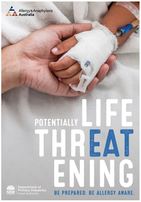 NSW Food Authority has The booklet Be Prepared. Be Allergy Aware (revised November 2016) produced by the Food Authority and Allergy & Anaphylaxis Australia, outlines requirements for food service businesses relating to declaring and managing allergens. In addition to the brochure, the following resources can also be downloaded:
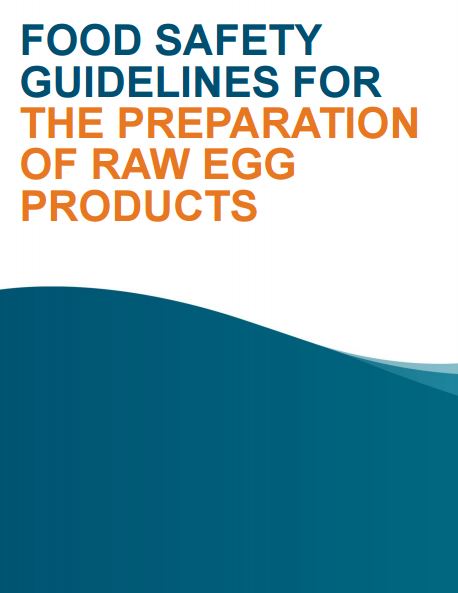 The NSW Food Authority has released an updated version of the food safety guideline for the preparation of raw egg products. The NSW Food Authority has developed these guidelines to assist businesses to undertake practices that will ensure that they comply with requirements when making products known to cause salmonellosis. The guidelines advise businesses to use safe alternatives to raw eggs in foods which are not cooked. Alternatives include commercially produced dressings and sauces, or pasteurised egg products. Should businesses choose to use raw eggs in products, the guidelines advise suitable control steps for foods and menu items containing raw egg, known to cause cases of salmonellosis, that: -The raw egg product is to be acidified to a pH of 4.2 (or less) or effectively heat treated (giving businesses instructions on how to achieve this) -The treated raw egg product should be stored at or below 5˚C for no longer than 24 hours. Download this guideline at NSW Food Authority 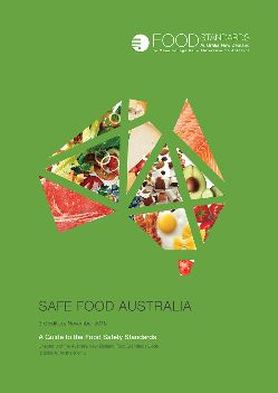 This 3rd Edition, November 2016 updated reference provides guidance to the three food safety standards in Chapter 3 of the Australia New Zealand Food Standards Code (the Code). Businesses can use the guidance information to help them to comply with the standards. It also provides new guidance for mobile, temporary and home-based vendors, as well as generic food safety record templates. Down load the new version of Safe Food Australia The FSANZ website also launched a "Food Safety Hub", as a page that provides links to
Queensland Health has a excellent checklist for businesses to use to check their responsibilities under the Queensland Food Act and also the Food Standards Code. A useful checklist with suggested records for all businesses
Queensland Health have a excellent guide on the design and fitout of food premises, using information in Standard 3.2.3 and Australian Standard 4674-2004: Design, construction and fit-out of food premises. It aims to provide users seeking further information on how to comply with the requirements of the Standard with acceptable solutions on how they may meet the outcomes. The guide also provides some best practice options for those food businesses that choose to demonstrate a higher level of compliance.
CSIRO "Make it Safe" is an excellent text on food safety, providing a solid foundation of information about food safety, within Australia.
Order the text from CSIRO. http://www.publish.csiro.au/pid/6354.htm ACT Health has a series of food safety posters with basic food safety information.
These series of posters are available in a range of languages. Food Safety Posters - Vietnamese Food Safety Posters - Urdu Food Safety Posters - Amharic Food Safety Posters - Arabic Food Safety Posters - Thai Food Safety Posters - Hindi Food Safety Posters - Korean Food Safety Posters - Chinese (Simplified) Food Safety Posters - Chinese (Traditional) Food Safety Posters - Japanese Food Safety Posters - Turkish
 NSW Food Authority has a food safety fact sheet providing guidance on food safety risks as applied to takeaway chicken retail shops.
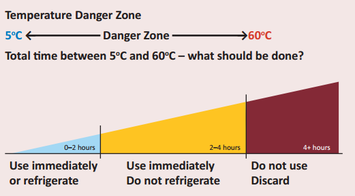 ACT Health has a useful poster for the 2 hour 4 hour rule
This guide, Food safety is your business, will help food business managers and staff understand food safety practices and procedures. Published by ACT Government Health Department this guide has been prepared for food handlers, to provide a basic understanding of:
Download the English version here_: This guide is available in a variety of languages: Amharic Arabic Chinese Simplified Chinese Traditional Hindi Japanese Korean Thai Turkish Urdu Vietnamese 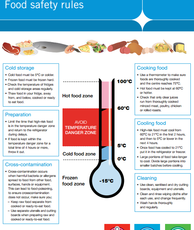 Great simple summary poster by Victoria health on basic food safety rules. Click here to download.pdf. |
Categories/
|
||||||||||||||||||||||||||||||||||||||||||||||||||||||||||


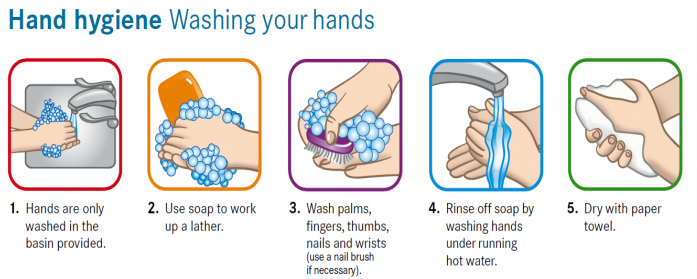
 RSS Feed
RSS Feed
